Fall 2020 Bridal Report: The Line Between Wedding Day-Dressing and “Real Fashion” is Blurrier Than Ever
odlr gallery
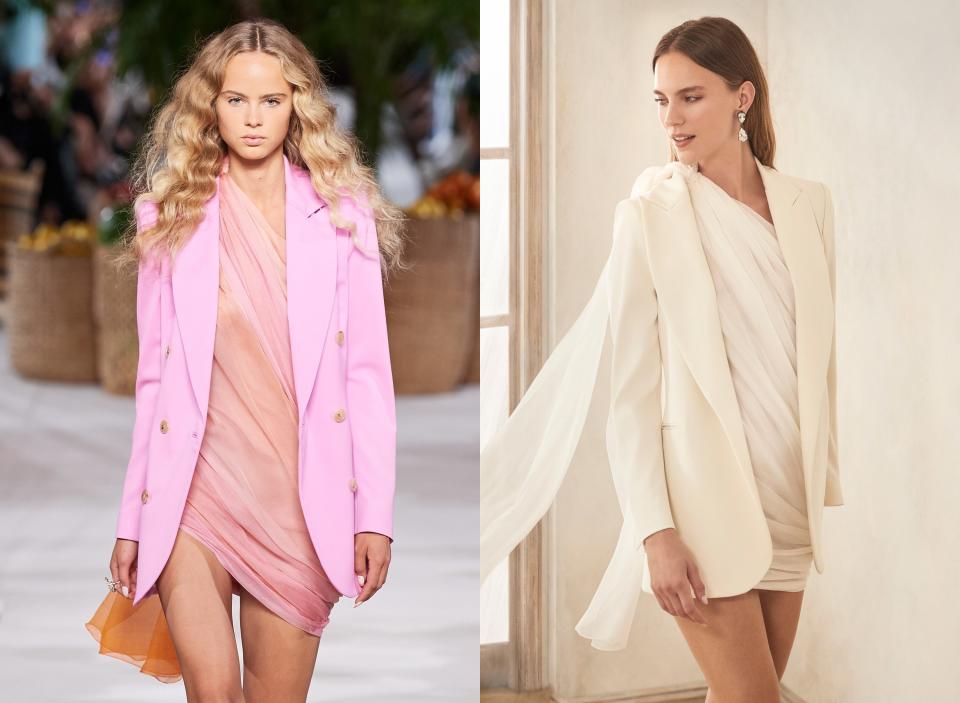
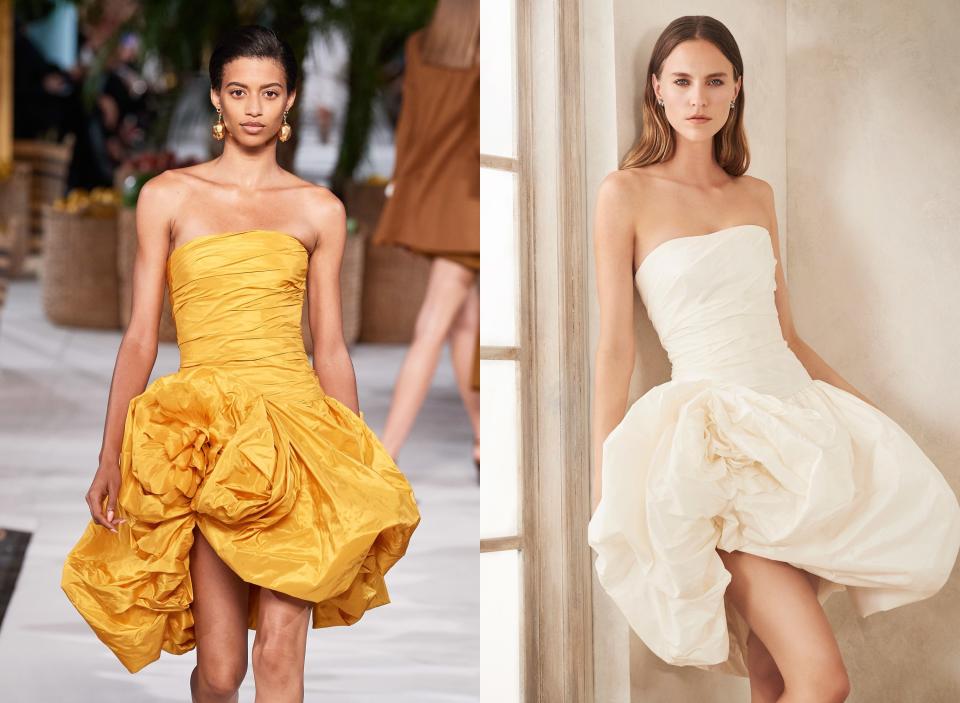
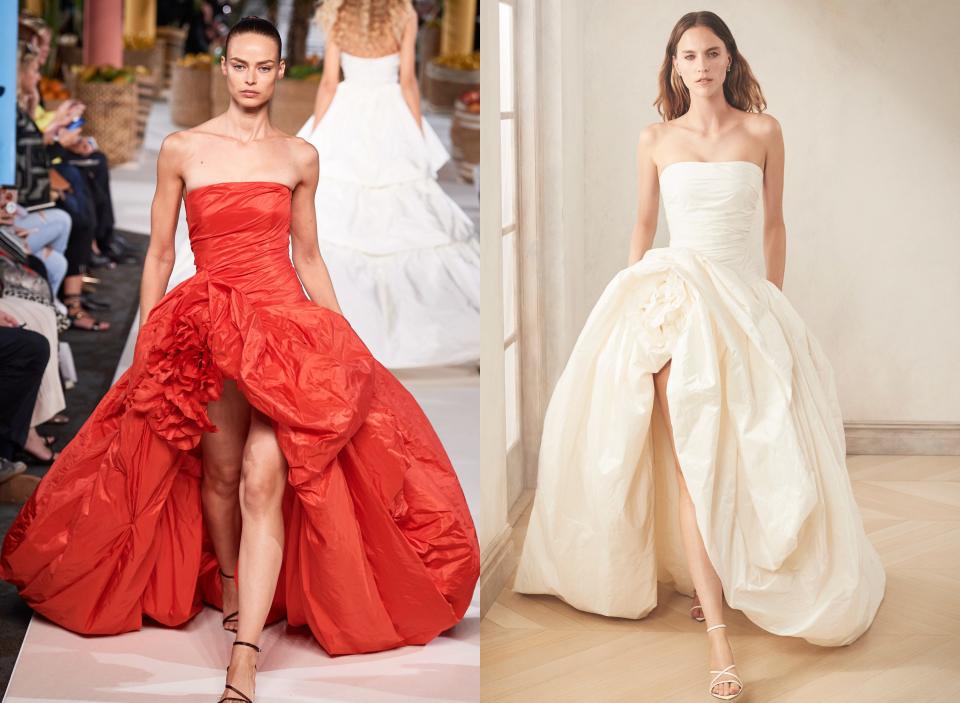
In some ways, the poles of bridal and “real fashion” have never been further apart. The top shows of Spring 2020 made powerful statements about climate change, identity, race, politics, gender; in short, they were about a lot more than just clothes. Bridal, on the other hand, remains rooted in the idea of a woman looking her absolute best on “the most important day of her life” with traditionally feminine tropes like ruffles, big skirts, and sweetheart necklines. Not to mention the (innocent, virginal) implications of white. It’s easy to see it the bridal market as wildly outdated and superficial.
Still, change is afoot in the world of weddings. Scroll past the tulle ballgowns in our Fall 2020 bridal coverage, and there are looks that would’ve shocked us five years ago. They hardly seem radical in comparison to the big-budget, culturally aware shows we see all over the world now, where designers introduce a provocative new look every couple of months. Within the confines of wedding dresses, that kind of rapid change isn’t really possible. But to write off bridal as irrelevant isn’t quite fair. Not only are women still getting married, but they’re investing more time, energy, and money into their weddings than ever before. Designers are taking notice; with a global bridal industry climbing to an estimated $300 billion, how could they not?
That explains the dozens and dozens of white, wedding-worthy dresses we saw on the top runways, from Loewe to Alexander McQueen to Victoria Beckham. These designers aren’t launching “bridal collections” anytime soon, because they don’t need to. Their white dresses, suits, and separates are meeting the needs of fashion-savvy brides who already have their gowns, but need something to wear to their engagement parties, rehearsal dinners, receptions, and so on. With more events to shop for and an endless stream of options online, brides are becoming less precious about their search and are shopping just a few months (or a few weeks) before their big day. In response to that, Net-a-Porter recently launched a “bridalwear” section with ivory pieces by non-bridal designers, including silky Prada dresses and sleek Rosie Assoulin jumpsuits. In a report Vogue Runway published earlier this year, the e-tailer’s global fashion director Elizabeth von der Goltz said brides are shopping for their weddings the same way they shop for everything else: on their phones, on multiple websites, and possibly at the last minute. “If you’re a bride, you want to see everything,” she says. “People want to buy what they’re going to wear tomorrow.”
Bridal designers seemed to have that in mind for their Fall 2020 collections. Yes, there were still ballgowns, cathedral veils, and couture embellishments, but the looks that stood out were less complicated and felt closer to “ready-to-wear” than true bridal. Danielle Frankel showed a handkerchief satin skirt with a ribbed-knit tank, Lela Rose paired a feathered mini with a silk camisole, and even Naeem Khan had minimalist silk slips and sequined T-shirts. These pieces will likely be less expensive and easier to produce than the typical princess gown with layers of tulle, crinolines, and hand-embellishments, and some might even be available “off the rack” in standard sizes.
At Oscar de la Renta, Fernando Garcia and Laura Kim took the concept a step further: They lifted three dresses from their September ready-to-wear show and simply remade them in white. Look 1 of Spring 2020 is identical to Look 1 of Fall 2020 Bridal—a draped minidress with a sharp blazer—but one is pink, and the other is ivory. The girl who loves Look 2’s bubble dress will have her pick between ivory and saffron; whether it has a “bridal” or “ready-to-wear” tag isn’t the point. A dress is a dress!
Fall bridal gallery
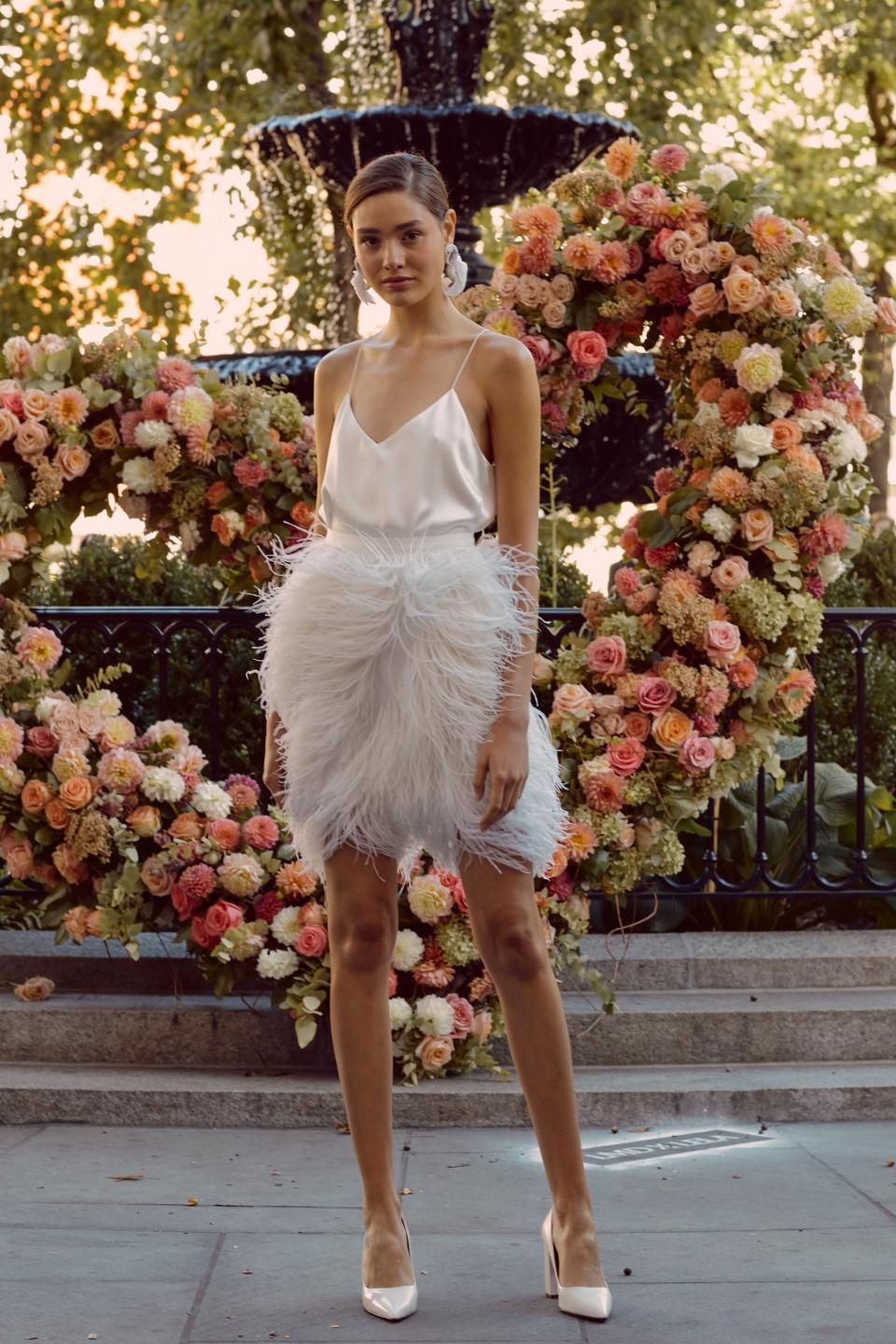
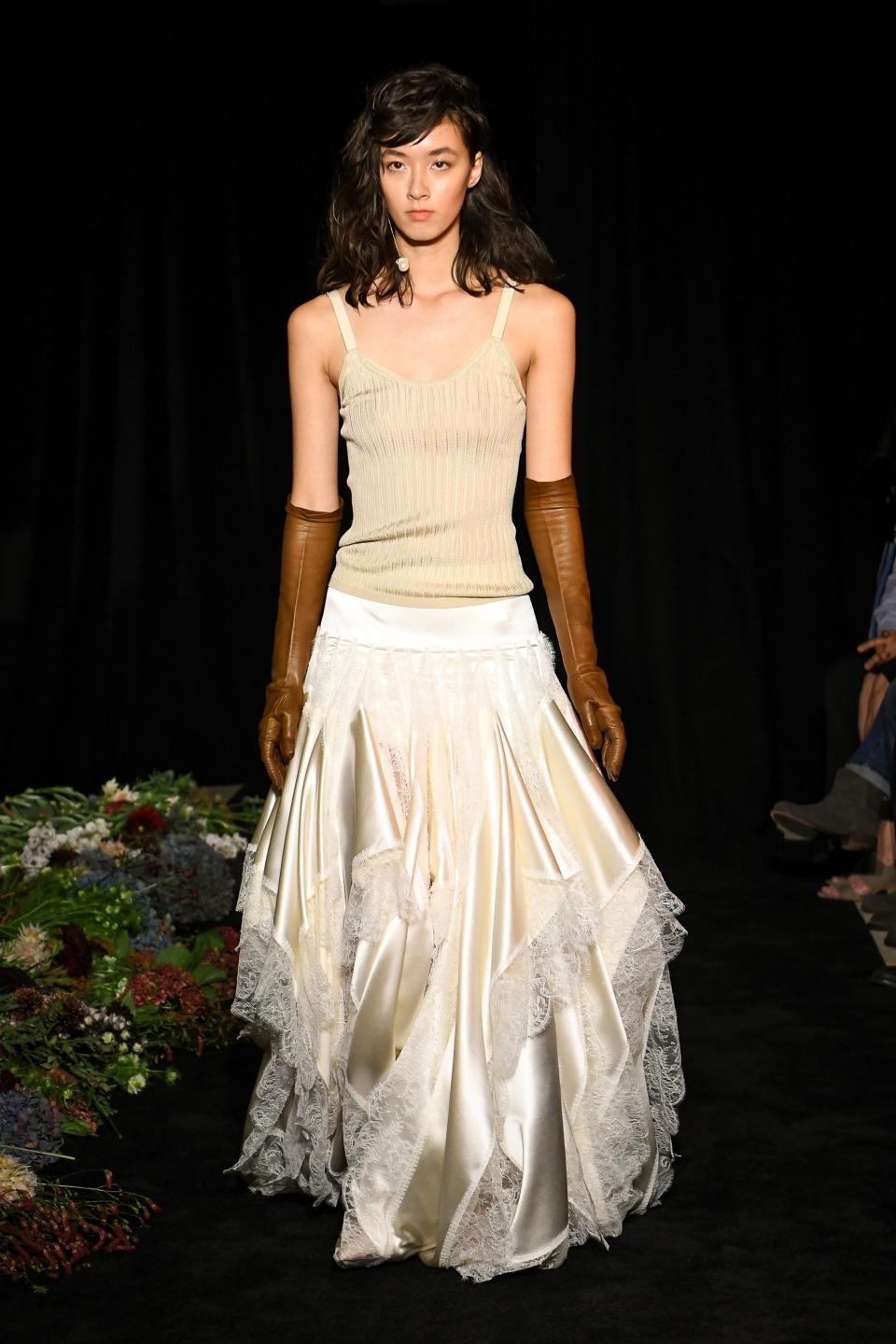
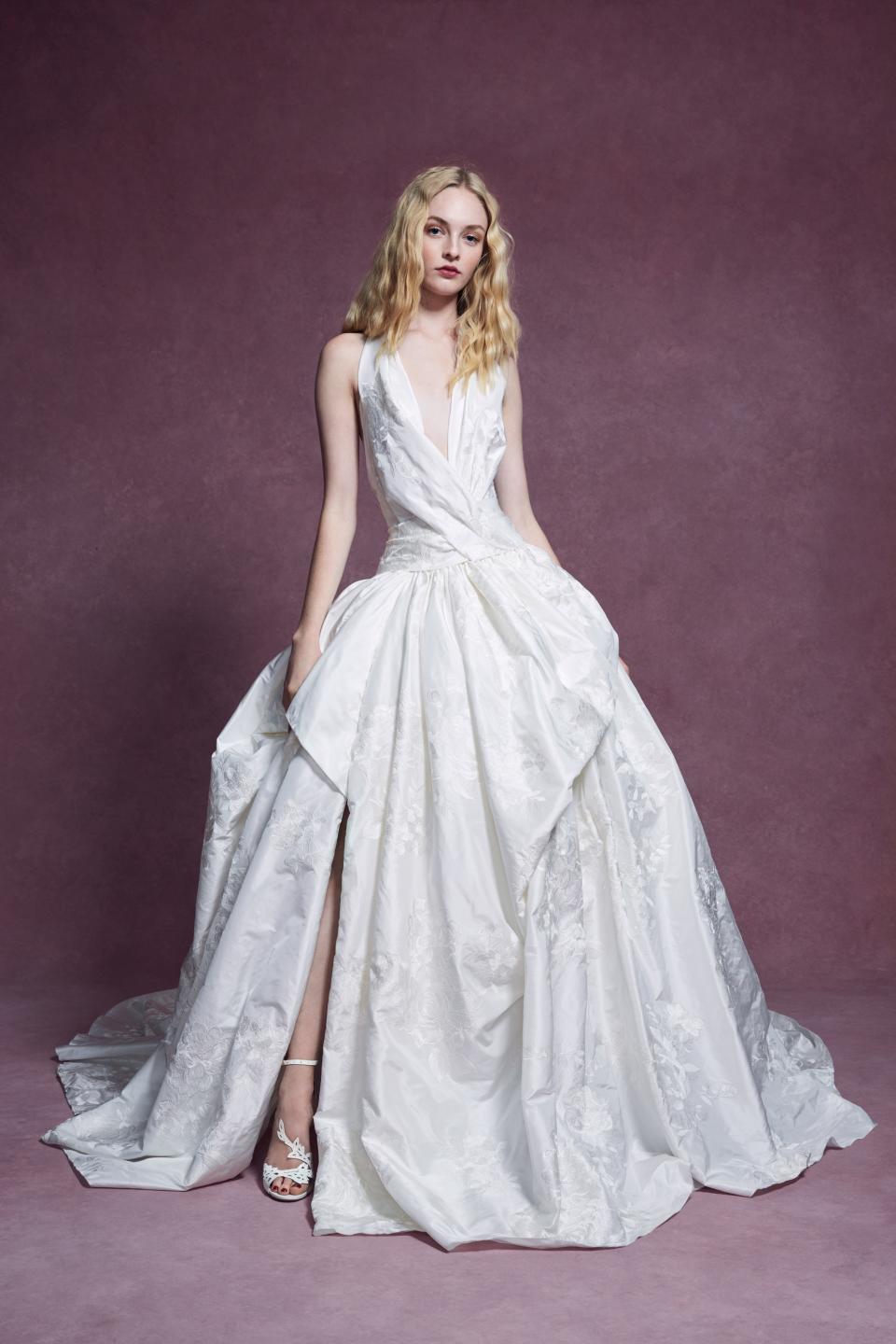
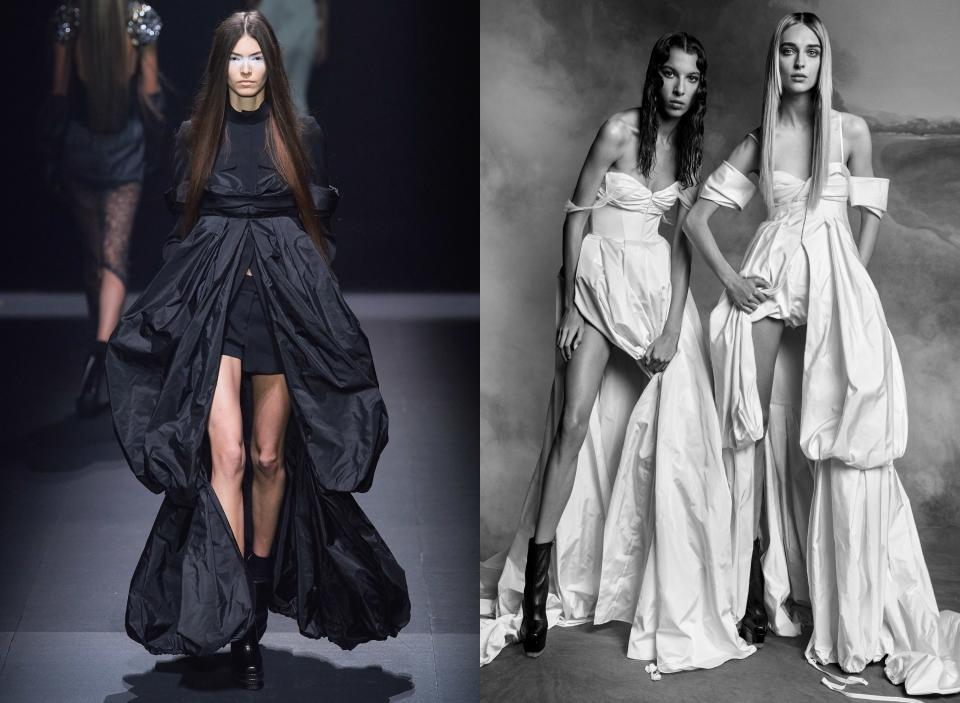
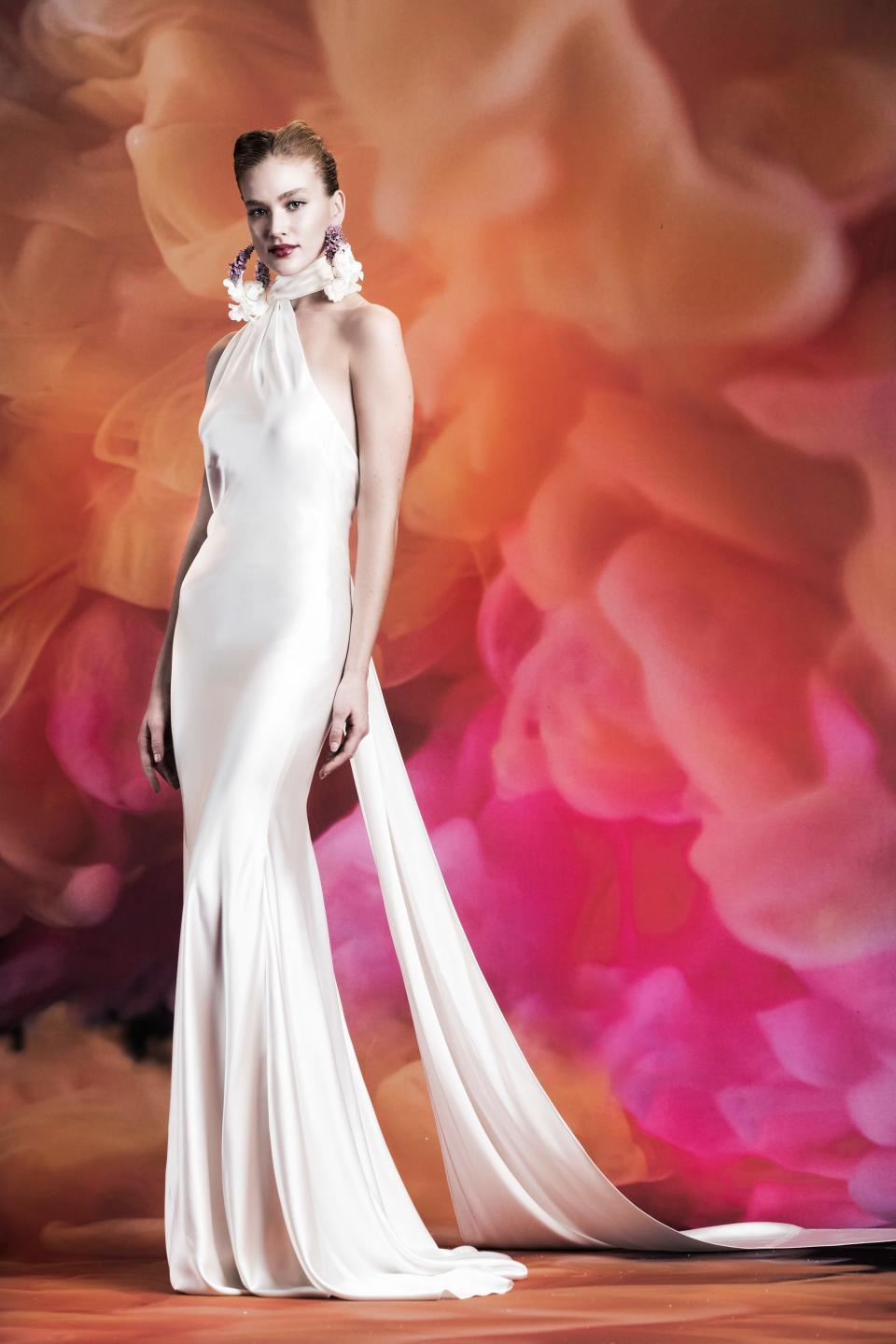
Rose addressed that gray area, too. Mixed in with her more familiar gowns, there were casual trousers and minidresses a bride might wear to her goodbye brunch. Rose called it “ready-to-wed” and will test the concept of selling ready-to-wear alongside couture gowns in her first bridal boutique, which opens soon in Dallas.
Vera Wang approached her Fall 2020 Bridal collection through the lens of “regular” fashion. The bras, belts, and harnesses she layered over gowns could be worn again with a cocktail dress or T-shirt, and she broke just about every “bridal rule” there is with gothic embroidery, all-black gowns, and a dishabille attitude. It was a far cry from the strapless ballgowns with which she started her label in 1989, but lest you forget, those were radical too; until Wang, a strapless dress was considered too risqué for brides. Now it’s as run-of-the-mill as white lace.
Even Marchesa is easing up, with lighter constructions, slimmer volumes, and less corsetry, “so the bride can actually breathe,” design director Anna Holvik said. She and her team also developed new textured fabrics and engineered embroideries, which will be less costly and less time-consuming to produce than a hand-beaded gown.
It’s impossible to miss the irony in all of this. Women are spending more time and money on their weddings than ever before, but they want to feel relaxed—and as the bridal industry continues to boom, designers are seeing their opportunity in rehearsal dinner dresses, not ballgowns. Also ironic: With bridal veering more casual, the ready-to-wear collections are getting bolder and more statement-making; look no further than the Spring 2020 shows for proof. On both counts, the takeaway is longevity: The white slipdress you wear down the aisle can be re-worn a dozen ways, ditto the tropical Marni frock, hand-embroidered McQueen suit, or neon Valentino jacket you’re saving up for. Minimalist, maximalist, or something in between, they’re all pieces with meaning and value that you can’t imagine wearing just once.
From a cultural standpoint, this isn’t exactly a moment for bridezillas, either. There’s a climate crisis, unhinged world leaders, natural disasters, gender inequality.… we won’t go on. If you’re a bride who’s aware of all of that—and of the traditional, vaguely backwards elements of weddings and marriage in general—you’re probably going to take a more laid-back approach to it all. Or at least prioritize what’s really important: having fun, being with the people you love, creating memories.
Earlier this summer, Marshmallow cofounder Susan Winget summed it up this way: “When things are so rough in the world, the intimacy [of a wedding] and this simple belief in building a tiny little nucleus with someone else.… That’s beautiful. It’s what I count on. We’re living through a crazy moment, so let’s just go back to the things that feel real, to people professing love to one another.” We couldn’t have said it better ourselves.
Originally Appeared on Vogue

